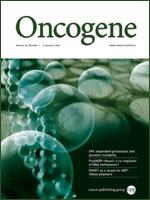 Here’s a rather odd case: When readers raised issues about some of the images in a 2008 cancer paper, the authors issued a correction last year. But when readers asked additional questions about the corrected images, the authors decided to retract the paper entirely, along with its correction.
Here’s a rather odd case: When readers raised issues about some of the images in a 2008 cancer paper, the authors issued a correction last year. But when readers asked additional questions about the corrected images, the authors decided to retract the paper entirely, along with its correction.
Both the original and corrected versions were questioned on PubPeer.
Here’s the retraction notice for the 2008 article “PRIMA-1MET induces mitochondrial apoptosis through activation of caspase-2,” published in Oncogene, which includes a link to the July 2016 correction:
The Editors and Publisher have agreed to retract the above paper and associated corrigendum following a request from the authors.
The G3PDH blot in Figure 6A in the corrigendum shows similarity to the Bid blot in supplementary Figure 2 of the original paper. The authors could not provide the original data for the supplementary figure or provide an explanation for this similarity identified, and therefore requested that the original paper and corrigendum be retracted.
The 2008 paper was first questioned on PubPeer in October 2015, when a commenter flagged a blot in Figure 5C that appeared to be identical to another blot from a 2006 Oncogene paper, published by two of the same authors—Boris Zhivotovsky, from Karolinska Institute in Sweden, who was second-to-last author on the 2008 paper and last author on the 2006 paper, and Helin Vakifahmetoglu (now Norberg), from the same institution, who was second author on the 2008 paper and first author on the 2006 paper. Several months later, a commenter flagged another potential figure duplication issue within the 2008 paper involving Figure 6A and a supplementary figure.
In April 2016, a PubPeer comment tagged as “author” and signed by Zhivotovsky and last author Klas Wiman from the Karolinska Institute, replied to these concerns:
Thank you for bringing this to our attention. To address these problems, we have gone back to raw data and also repeated some of the experiments. We have sent corrections to the journal.
Three months later an official correction appeared in Oncogene, which aimed to remedy the issues described on PubPeer. Here’s the 2016 correction notice:
The authors repeated the experiments presented in Figure 5c (western blot to show cytochrome c release upon PRIMA-1MET treatment) and Supplementary Figure S2 (western blot to show Bid cleavage upon PRIMA-1MET treatment) with small modifications. In Figure 5c, the pan-caspase inhibitor zVAD was used instead of the caspase-3 inhibitor zDEVD. In Supplementary Figure S2, an antibody that detects full-length Bid was used rather than an antibody that detects both full-length and cleaved Bid.
In the notice, the authors also describe using “raw data” to create a new Figure 6a:
In addition, a new version of Figure 6a (siRNA knockdown of caspase-2) was created using raw data.
The notice presents the revised figures and explains that the changes do not influence the conclusions from the 2008 paper.
But the 2016 correction created new concerns on PubPeer. One commenter pointed out similarities between a blot in the corrected article and the original paper. Readers also questioned whether the figures in the corrected paper actually reflected new experiments, after a comment signed by Zhivotovsky and Wiman indicated that the original data for the experiments, performed almost a decade earlier, had gone missing.
By February, the paper — cited 39 times, according to Clarivate Analytics’ Web of Science, formerly part of Thomson Reuters — was retracted “following a request from the authors,” according to the notice.
PubPeer users have also raised questions about other articles by Zhivotovsky and Wiman.
We contacted Zhivotovsky and Wiman to confirm and clarify what happened with these figures and original data, but did not hear back. We also reached out to the journal.
Zhivotovsky has issued multiple corrections in the past for image issues (1, 2, 3, 4, 5, 6), and Wiman has a 2009 correction in Molecular Cell due to figure problems. Vakifahmetoglu-Norberg also published two errata in 2016 because of figure errors for papers on which she was last author (1) and first author (2). Another middle author, Hélène Stridh, issued a corrigendum about swapping two figures in a 1998 article in FEBS Letters, on which she was first author.
Like Retraction Watch? Consider making a tax-deductible contribution to support our growth. You can also follow us on Twitter, like us on Facebook, add us to your RSS reader, sign up on our homepage for an email every time there’s a new post, or subscribe to our daily digest. Click here to review our Comments Policy. For a sneak peek at what we’re working on, click here.
“…which has not yet been cited…”? According to the Oncogene page, the paper has 29 citations in CrossRef and 36 citations in Scopus.
Thanks! You’re right, it’s been cited 39 times according to Clarivate. The error has been fixed.